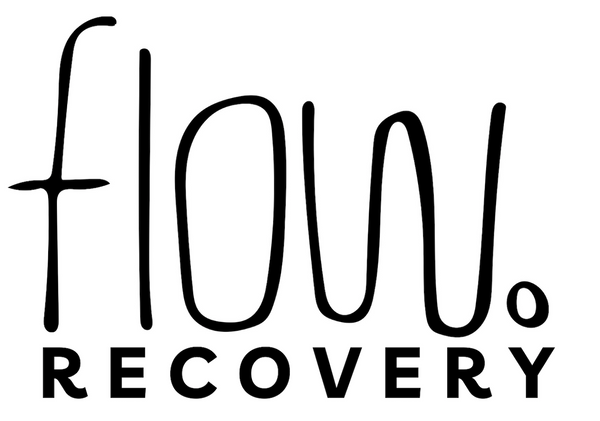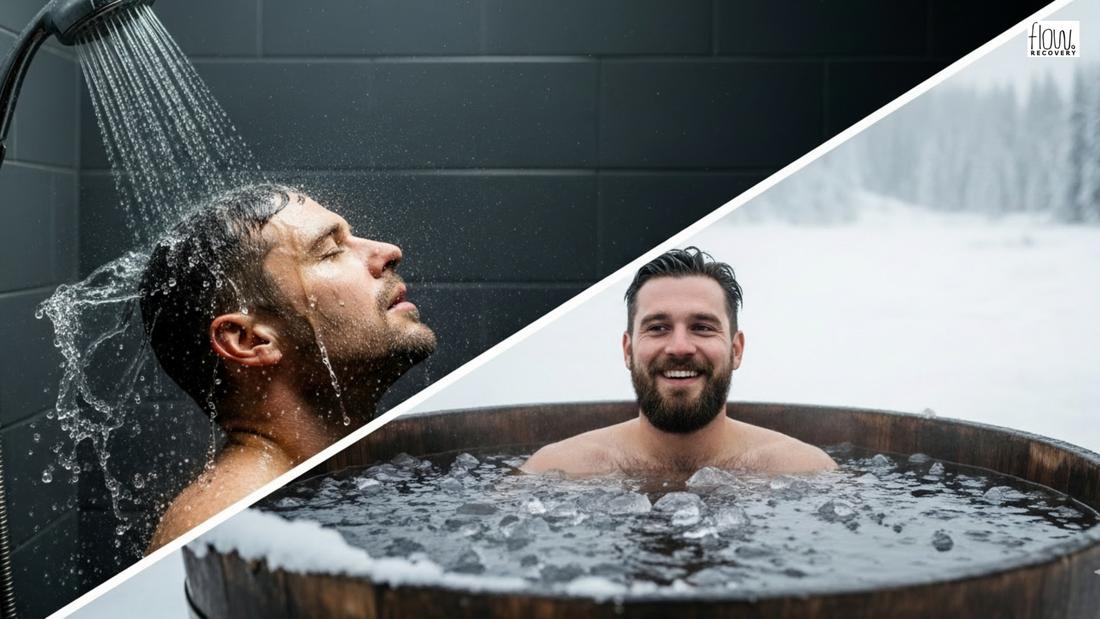Quick Takeaways:
- Cold Showers : Easy to do daily, no equipment needed - Boosts energy and mood - Improves circulation and skin health - Less effective for deep muscle recovery
- Ice Baths : More intense, controlled cold exposure (3–10°C) - Reduces muscle soreness and inflammation - Builds mental resilience - Requires setup and may be uncomfortable for beginners
- Science of Cold Therapy : Causes vasoconstriction and vasodilation - Triggers release of norepinephrine and dopamine - Slight metabolism boost - Enhances mental toughness
- Safety Tips : Start short and gradually increase duration - Consult a doctor if you have health issues - Stop if experiencing extreme pain or numbness
- Combining with Other Practices : Contrast therapy (hot + cold) improves circulation - Post-workout stretching, hydration, nutrition enhance recovery - Breathing techniques increase tolerance and focus
- User Experiences : Faster recovery after workouts - Reduced soreness and chronic pain - Increased energy and mental clarity
- Flow Recovery Products : Portable ice baths for home or travel - Daily Ice Bath & Chiller Combo for consistent cold exposure - Recovery Pack with essential accessories
-
Which One to Choose? : Cold showers for beginners and daily mood/energy boost - Ice baths for serious recovery and performance - Start small and progress gradually for best results
Introduction
Cold therapy has been gaining popularity over the past few years. From athletes to wellness enthusiasts, more people are turning to cold showers and ice baths to speed up recovery, boost performance, and feel more energized. But with so many options available, which one is actually better? In this blog, we’ll break it down, explore the science, and give you practical advice for using cold therapy safely and effectively.

Cold Showers: Quick and Easy
Cold showers are the simplest way to experience cold therapy. You don’t need any special equipment, and they can fit into your daily routine easily.
Benefits of Cold Showers:
- Instant Energy Boost: A cold shower in the morning can wake you up instantly and improve alertness.
- Mood Improvement: Cold water triggers a release of endorphins, which can help you feel happier and more focused.
- Skin and Circulation: Cold showers improve blood flow and may give your skin a healthy glow.
Limitations:
- The water may not be cold enough to reach deeper muscles for effective recovery.
- Maintaining a consistent temperature is tricky.
- For reducing inflammation after intense exercise, cold showers are less effective than ice baths.
In short, cold showers are great if you’re looking for a quick, easy way to boost your energy and mood. They are beginner-friendly and convenient, but may not give you the full recovery benefits you’d get from an ice bath.
Ice Baths: The Next Level of Recovery
Ice baths are more intense, and they require some preparation, but the results can be worth it, especially if you’re serious about performance and recovery.
Benefits of Ice Baths:
- Muscle Recovery: Ice baths help reduce soreness and inflammation by constricting blood vessels and flushing out waste products from your muscles.
- Mental Resilience: Sitting in icy water for a few minutes is challenging, but it can boost mental toughness and stress resilience.
- Hormonal Benefits: Cold exposure triggers the release of norepinephrine and dopamine, helping with alertness, focus, and mood.
- Consistent Results: With proper setup, ice baths allow you to control temperature and duration, providing predictable recovery outcomes.
Limitations:
- Ice baths require preparation, a tub, and sometimes extra equipment.
- They can be uncomfortable for beginners.
- People with certain health conditions, like heart problems, should avoid ice baths or consult a doctor first.
If you’re an athlete or someone serious about recovery, ice baths offer the kind of results that cold showers can’t match.
The Science of Cold Therapy
So, what exactly happens to your body when you expose it to cold water?
- Vasoconstriction and Vasodilation: Cold water causes blood vessels to constrict, which reduces inflammation and swelling. Once you get out, vessels dilate, increasing blood flow and oxygen delivery to tissues.
- Hormone Release: Cold exposure triggers norepinephrine and dopamine, which improve alertness, reduce stress, and enhance mood.
- Metabolism Boost: Your body works harder to stay warm, which can slightly increase calorie burning.
- Mental Benefits: Facing and enduring cold water can strengthen your mental toughness, helping you handle stress better in daily life.
Understanding these mechanisms helps explain why ice baths are particularly effective for recovery and performance.
Safety Tips & Precautions
Cold therapy is generally safe for healthy individuals, but it’s important to follow some guidelines:
- Duration: Start with 1–2 minutes for cold showers and 3–5 minutes for ice baths. Gradually increase over time.
- Temperature: Cold showers can be as cold as your tap allows. Ice baths should be around 3–10°C.
- Health Conditions: People with heart disease, high blood pressure, or other medical issues should consult a doctor before starting cold therapy.
- Listen to Your Body: Shivering and discomfort are normal, but extreme pain or numbness is a sign to stop.
By following these tips, you can enjoy the benefits of cold therapy safely.
Combining Cold Therapy with Other Practices
Cold therapy works even better when paired with other wellness routines:
- Contrast Therapy: Alternating hot and cold (sauna then ice bath) improves circulation and reduces inflammation.
- Post-Workout Care: Stretching, hydration, and nutrition help maximize recovery after cold exposure.
- Breathing Techniques: Practicing deep breathing or methods like the Wim Hof Technique during cold exposure can improve tolerance and mental focus.
These practices enhance the effects of cold therapy and make it a more holistic recovery tool.
Real User Experiences
Many Flow Recovery users report impressive results with ice baths and cold showers:
- Faster recovery after intense workouts.
- Reduced soreness and chronic pain.
- Improved mental clarity and focus.
- Increased energy levels throughout the day.
Hearing real stories from people who use these methods regularly shows that cold therapy isn’t just a trend, it’s a lifestyle change that can genuinely enhance performance and well-being.
Flow Recovery’s Solutions
Flow Recovery makes cold therapy simple and accessible with a range of products designed to fit your needs:
- Portable Ice Baths: Easy to set up at home or on the go.
- The Daily Ice Bath & Chiller Combo: Ensures consistent cold exposure for reliable results.
- The Recovery Pack: Includes essential accessories for an optimal ice bath experience.
With these solutions, you can enjoy all the benefits of cold therapy without the hassle of traditional setups.
Which One Should You Choose?
Cold showers and ice baths both have their place:
- Cold Showers: Great for beginners, quick energy boosts, and daily mood enhancement.
- Ice Baths: Best for serious recovery, muscle soreness, inflammation reduction, and mental resilience.
Ultimately, the right choice depends on your goals, lifestyle, and comfort level. For maximum benefit, consider starting with cold showers and gradually moving into ice baths as your body adapts. And with Flow Recovery products, getting started has never been easier.
Cold therapy is more than just a trend, it’s a proven way to enhance recovery, boost performance, and improve overall wellness. Ready to dive in? Flow Recovery is here to make the process simple, safe, and effective.
Frequently Asked Questions
-
What is the main difference between cold showers and ice baths?
Cold showers are quick, convenient, and easy to do daily, while ice baths are more intense, controlled, and better for muscle recovery and performance.
-
How long should I stay in a cold shower or ice bath?
Start with 1–2 minutes for cold showers and 3–5 minutes for ice baths. Gradually increase as your body adapts.
-
Can cold therapy help reduce muscle soreness after exercise?
Yes! Ice baths are particularly effective for reducing inflammation and post-workout soreness, while cold showers provide milder benefits.
-
Are cold showers or ice baths better for mental resilience?
Both help, but ice baths have a stronger effect on mental toughness because of the longer, more intense exposure to cold.
-
Is cold therapy safe for everyone?
Cold therapy is generally safe for healthy individuals. However, people with heart conditions, high blood pressure, or certain medical issues should consult a doctor first.
-
Can I combine cold therapy with other recovery methods?
Absolutely. Contrast therapy (alternating hot and cold), stretching, proper hydration, nutrition, and breathing techniques can all enhance the benefits of cold therapy.
-
How often should I do cold showers or ice baths for recovery?
It depends on your goals. Cold showers can be done daily, while ice baths 2–3 times per week are usually sufficient for recovery and performance.
-
What temperature is ideal for an ice bath?
Ice baths should generally be between 3–10°C for effective recovery. Cold showers will vary depending on your tap water.
-
Can beginners start with ice baths?
Yes, but it’s best to start slowly. Beginners can begin with short durations and gradually increase time as they build tolerance. Cold showers are a great starting point.
-
How can Flow Recovery products help with cold therapy?
Flow Recovery offers portable ice baths, the Daily Ice Bath & Chiller Combo, and Recovery Packs to make cold therapy safe, convenient, and effective at home or on the go.


